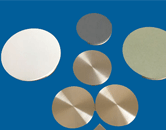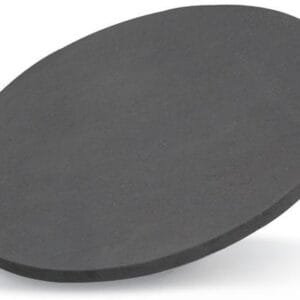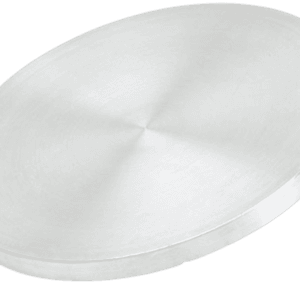| Material Type | Selenium Oxide |
| Symbol | SeO2 |
| Color/Appearance | White Crystals |
| Melting Point (°C) | 340 |
| Density | 3.95 g/cm3 |
| Molecular Weight | 110.96 |
| Sputter | |
| Exact Mass | 111.906 g/mol |
Selenium Oxide Sputtering Targets
Selenium oxide (SeO₂) is a commonly used compound in sputtering applications. It is a colorless solid produced through the oxidation of selenium, typically by burning in air or reacting with nitric acid or hydrogen peroxide.
Selenium Oxide Sputtering Targets Specifications
- Purity: 99.99%
- Circular Targets: Diameter up to 14 inches, Thickness from 1 mm
- Block Targets: Length up to 32 inches, Width up to 12 inches, Thickness from 1 mm
Applications
- Ferroelectric
- Gate Dielectric
- For CMOS Devices
Features
- High Purity: With a minimum purity of 99.99%, our Selenium Oxide Sputtering Targets ensure the highest quality for demanding applications.
- Custom Sizes Available: Targets can be customized to specific requirements for varied sputtering processes.
Manufacturing Process
- Cold Pressing and Sintering: Our targets are carefully cold-pressed and sintered to ensure consistent density and durability.
- Elastomer Bonding: Targets are elastomer-bonded to backing plates for better stability during sputtering.
- Vacuum Cleaning: All targets are thoroughly cleaned for use in vacuum environments, ensuring contamination-free performance.
- Environmental Protection: The targets are packaged to prevent environmental contamination and ensure safe shipping.
Options
- 99.99% Minimum Purity: Targets are manufactured with the highest level of purity.
- Smaller Sizes Available: Custom sizes can be provided, particularly for R&D applications.
- Sputtering Target Bonding Service: We offer bonding services to enhance the material’s adherence and ensure optimal sputtering results.
Our Selenium Oxide Sputtering Targets are designed for advanced applications in various industries, offering high purity and customizable options to meet your specific needs.


 MSDS File
MSDS File



Reviews
There are no reviews yet.